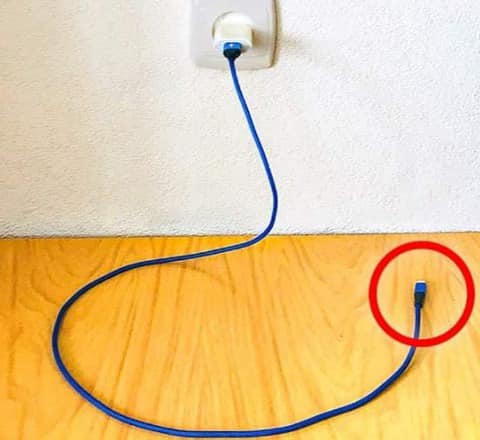In today’s tech-centric world, a plugged-in phone charger has become a common sight in households, often left even when not actively charging a device. This common practice raises questions about energy consumption, safety, and its impact on electricity bills. There are a few reasons why leaving your charger plugged in without your phone is not as harmless as it seems.
The Power of A Phone Charger
Chargers consume power even when not actively charging a device. A test using a genuine Apple phone charger revealed that it uses approximately 130W of power a month, translating to 1.5KW h a year. While this might seem negligible at first glance, the cumulative effect becomes significant when considering multiple chargers.1
It’s essential to consider the number of chargers in use and their individual power draw. Larger chargers tend to consume more power, and non-genuine chargers may take significantly more, up to 10 to 20 times based on testing. Additionally, the environmental impact of millions of continuously-running chargers should not be overlooked, contributing to increased kilowatt hours and carbon emissions.
Fire Hazard: A Real Concern
Leaving a phone charger plugged in poses a potential fire hazard. Overheating chargers, especially when buried under items like clothing or books, can lead to increased temperatures and pose a risk of fire. This danger is amplified when dealing with non-branded, low-quality chargers that may not adhere to safety standards.2
Phone Charger Left Alone = Higher Electricity Bills
A phone charger left plugged in can contribute to higher electricity bills. Even when not actively charging a phone, the charger continues to draw power from the outlet. The cumulative effect of multiple chargers constantly consuming energy adds up over time, leading to an unnecessary increase in electricity costs.
While the individual cost per charger may seem minimal, the yearly expense for a dozen chargers can be significant. For instance, the collective cost of leaving five chargers plugged in constantly is around $0.37 per year, highlighting the financial impact of this seemingly harmless habit.4
Wastes Energy: A Silent Contributor
Beyond the financial implications, leaving a phone charger plugged in wastes energy. The seemingly inconspicuous power draw contributes to heating up homes and increasing pollution. With the growing emphasis on environmental sustainability, minimizing unnecessary energy consumption becomes crucial.
While smartphone and tablet chargers have almost no phantom load, power tool battery chargers can be notable energy hogs, especially older ones. Identifying and unplugging inefficient chargers is a practical step towards reducing energy waste.
Leaving your phone charger plugged in without a connected device has its pitfalls. Beyond the financial aspects, there are valid concerns regarding energy wastage, potential fire hazards, and their environmental impact. To mitigate these risks, it is advisable to unplug chargers when not in use, invest in smart outlets for remote control, and prioritize safety by choosing high-quality, branded equipment. As we navigate the digital age, small changes in our charging habits can collectively contribute to a more sustainable and safe living environment.
